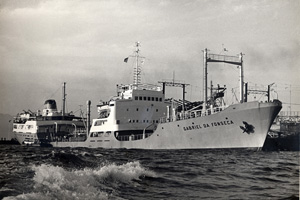Timeline
1949

March – Then President Eurico Gaspar Dutra sanctioned Act No. 650, which authorized the Executive Arm to open special credits. Part of these credits was destined to the National Petroleum Council (NPC) to cover the expenses with the acquisition of oil tankers.
December – CNP purchases the tanker Venus, which belonged to the Swedish shipping company Johnson Line. This first unit, at the time, the largest South American ship, received the name of Presidente Dutra upon receiving the Brazilian flag.
1950
April – National Tanker Fleet (Fronape) was created through Decree No. 28,050, signed by then President Getulio Vargas, and its first administrator was Lt. Col. Milton de Lima Araújo.
December – Eight months after the creation of Fronape, Decree no. 29.006 defined its tasks: transport oil and oil products in Brazil or abroad, being also allowed to store and trade them.
1952
November – Through Decree no. 31.775, Brazilian President Getúlio Vargas approved the new regulation for Fronape, keeping the same attributions set forth two years before.
1953
October – Act No. 2.004 established the monopoly of research, drilling, refining and transportation of oil and oil products, and gases of any kind. The same document stated that Petrobras would be responsible for carrying out these procedures. Fronape started to have its activities guided to carry out all maritime transportation in coastal shipping and participate in the long haul transportation in imports and exports, supporting the national oil policy.
1970
When General Ernesto Geisel became the President of Brazil, it was determined that Fronape would expand its performance area the same way it was happening in other Petrobras’ activity branches.
1972
Fronape started to perform in the transport of ores and chemicals.
1973
The construction of the two first ships specialized in the transport of ores and chemicals was ordered. Also at the beginning of that decade, agreements with Japanese shipyards were signed for the construction of VLCC (Very Large Crude Carrier) ships, with capacity over 250 thousand gross tonnage (GT).
1974
Fronape received in Japan the ship José Bonifácio. Two other vessels of the same category were added to the fleet, increasing the participation of Petrobras in the import of crude oil.
1978 to 1980
Other four VLCC ships were added to the fleet, these ones built in Brazil.
1998
Fronape’s ships were incorporated by the newly created Petrobras Transporte S.A - Transpetro.